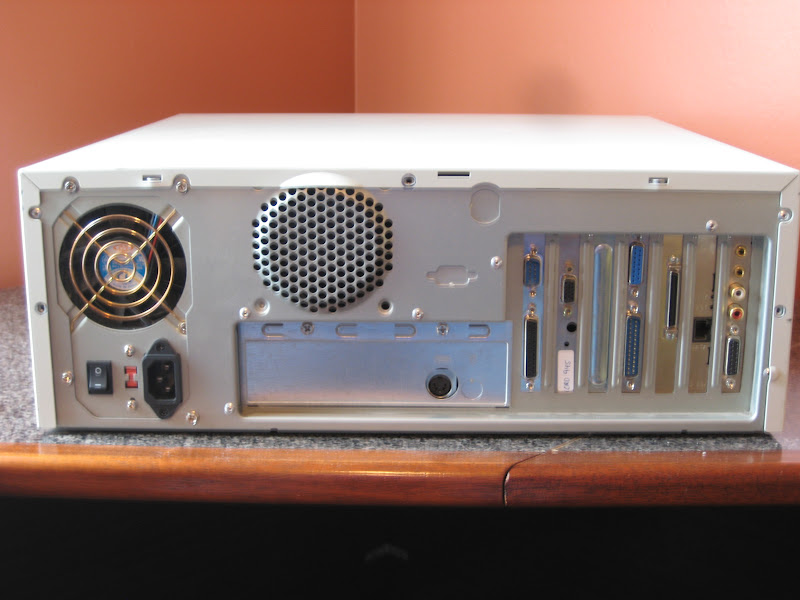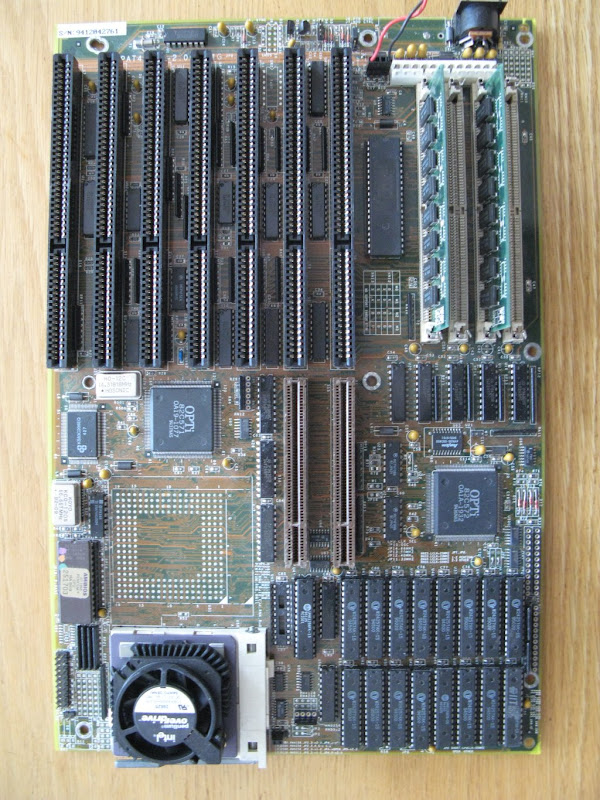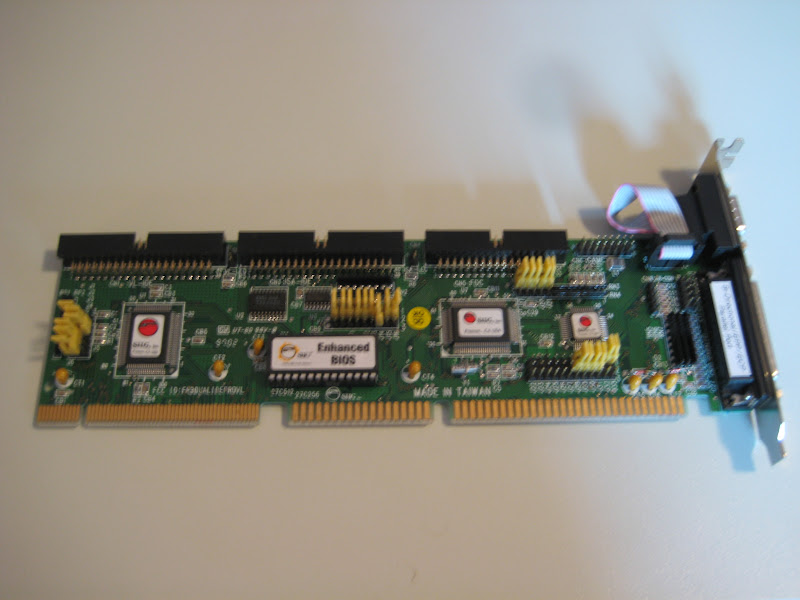First post, by Anonymous Coward
- Rank
- l33t
A few people have seen my VLB Pentium motherboard, but I thought I'd share the rest of the system. I built it mostly in order to play early multi-media CD-ROM games and use later Win31 applications. I also built it because I was always jealous of the early Pentium adopters.
-TMC PAT45PVS VLB Motherboard w/15ns 512kb WB L2
-Pentium Overdrive 133MHz (Socket4)
-128MB FPM DRAM (maximum)
-SIIG PIO4 VLB Multi I/O
-Number Nine Motion 771 VLB w/4MB VRAM (S3 968)
-Soundblaster AWE64 Gold w/standard 4MB Wavetable
-Adaptec 1542CP SCSI Host
-Intel 10mbps NIC
-IBM 34GXP 20GB 7200RPM EIDE
-Plextor PX-32CSi 32X Caddy CD-ROM Drive SCSI
-Iomega Zip100 SCSI internal

I am using an Inwin ATX case. I believe the model is H500. Plextor 32X caddy loader and Iomega Zip100 are installed.

The back view showing all the goodies installed. Notice the lovely ATX backplate to cover the gape.

It's a mess in there. In the bottom left corner you can just barely make out the adapter I use to connect the ATX power supply to this AT board.

TMC PAT45PVS Socket4 Pentium board. It's little more than a 486 motherboard with a socket for a Pentium and some extra cache. This photo is fairly old, and I no longer use this memory configuration.

For some reason this board supports the goofiest memory configurations. It might be because it only has a 32-bit interleaved memory bus, rather than the 64-bit bus like a proper Pentium should. It takes only FPM memory, and can only work with parity disabled when the full 128mb is installed as pictured above (two double sided 32MB, one single sided 64mb SIMM)

The incredible 5V Socket4.

This card took me forever to find. It is based on S3 968. At one point the Diamond version of this card was fairly common, but not so much anymore. It uses a very nice 220MHz RAMDAC, so you can even get decent refresh rates at 1280x1024 and 1600x1200 resolutions.

This is an SIIG PIO4 multi I/O with dedicated BIOS. I tested about 6 non-caching IDE controllers, and this one seemed to be the fastest. I'll likely upgrade to a caching controller eventually.
"Will the highways on the internets become more few?" -Gee Dubya
V'Ger XT|Upgraded AT|Ultimate 386|Super VL/EISA 486|SMP VL/EISA Pentium
